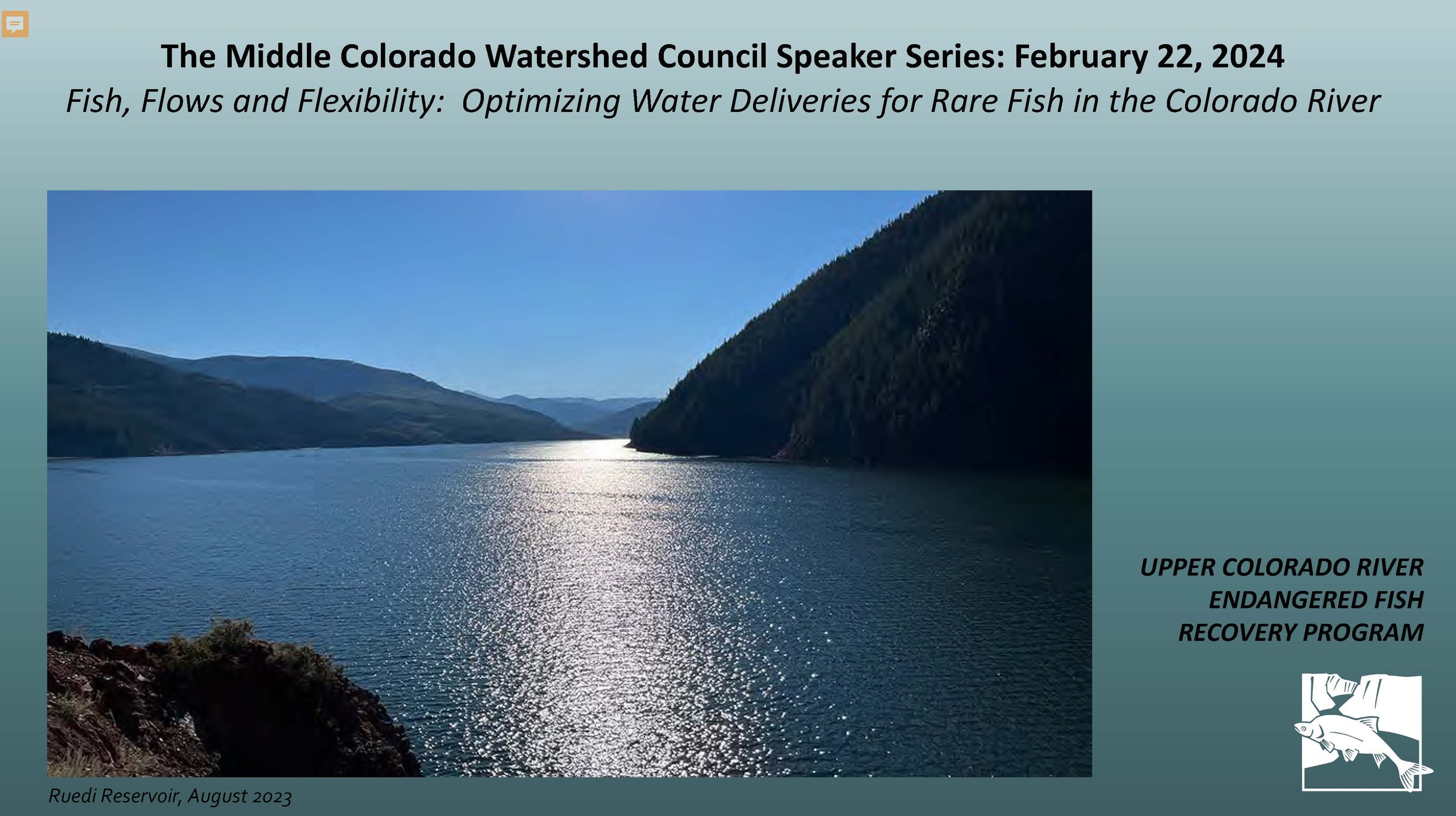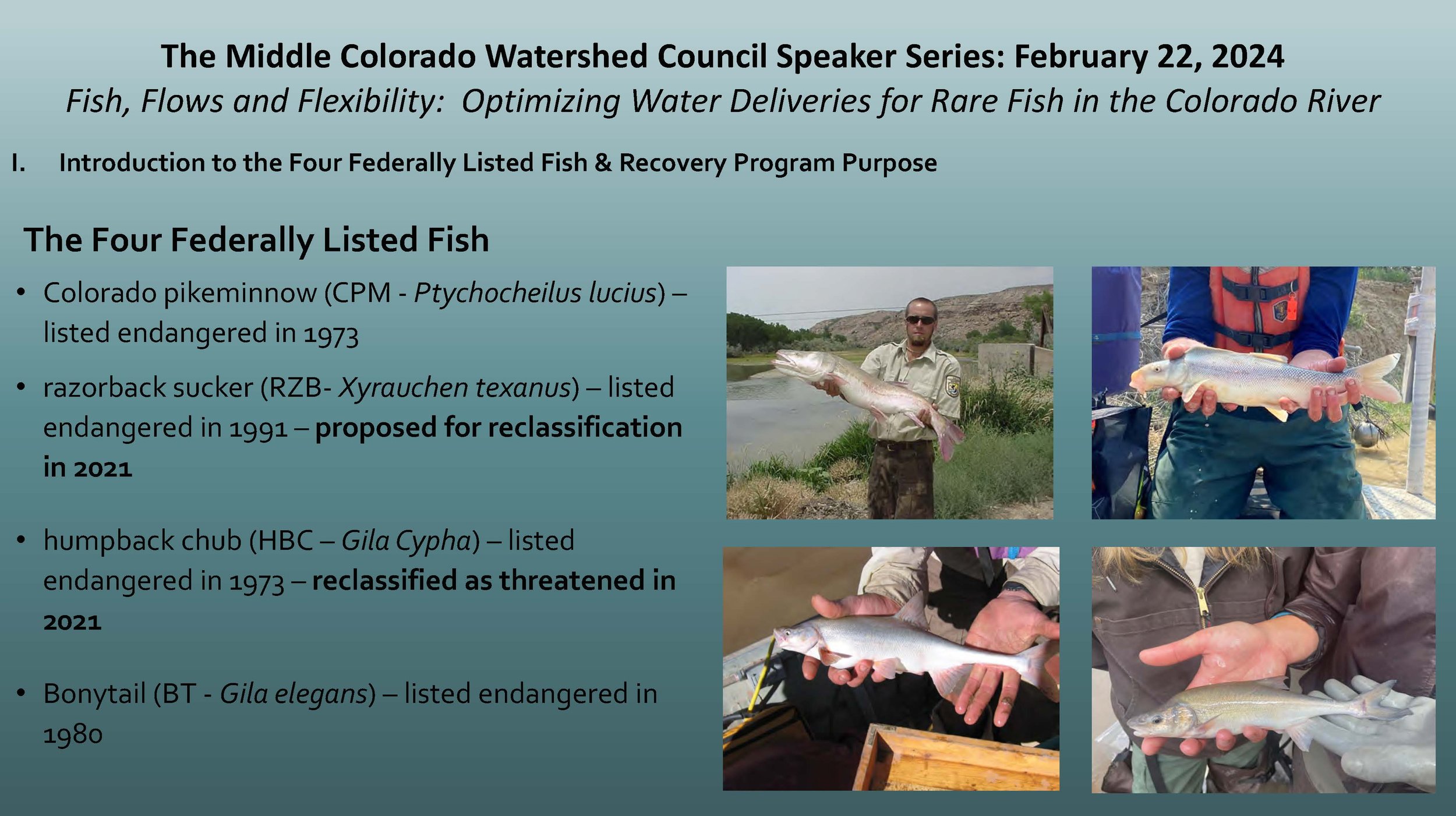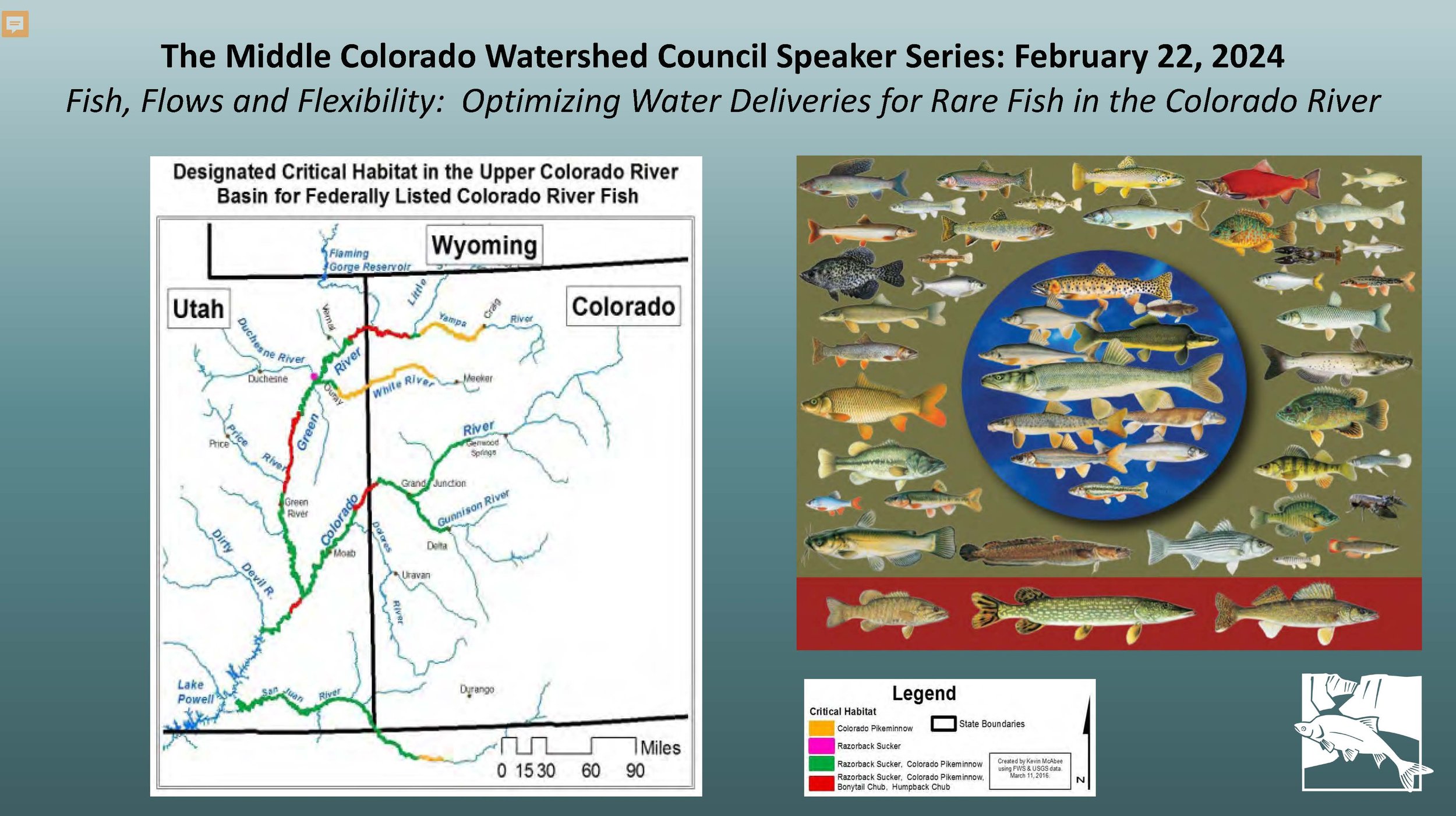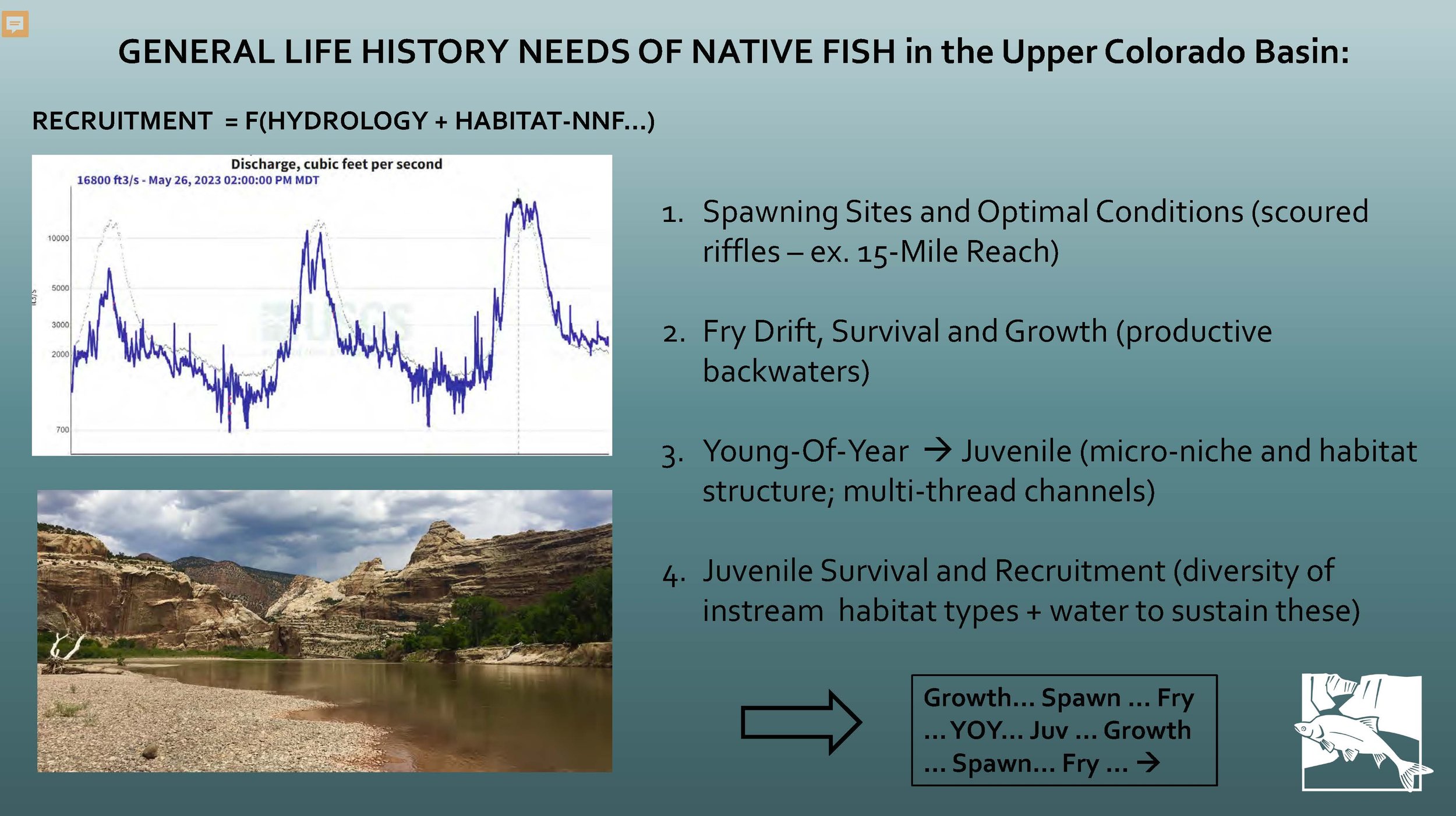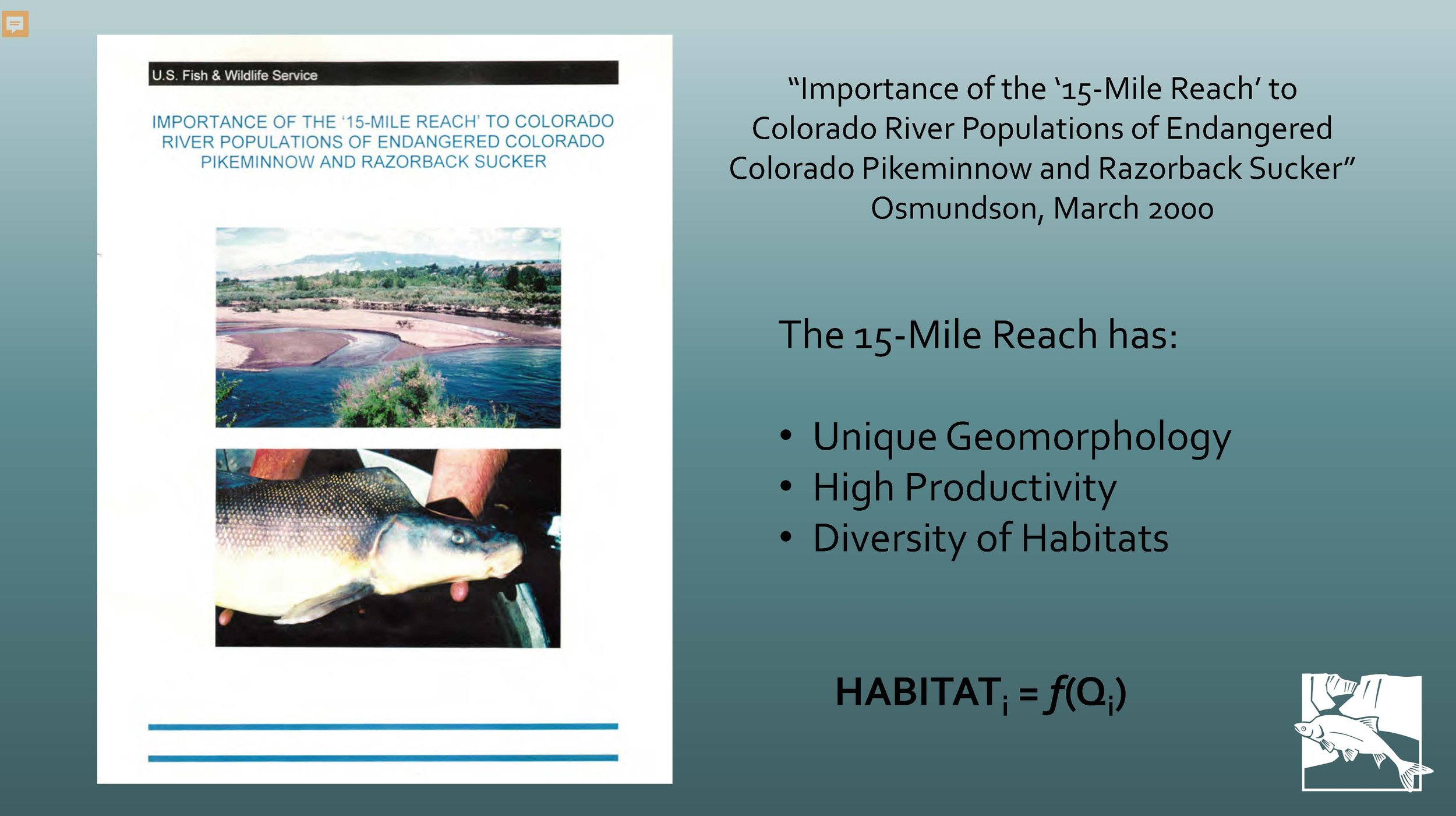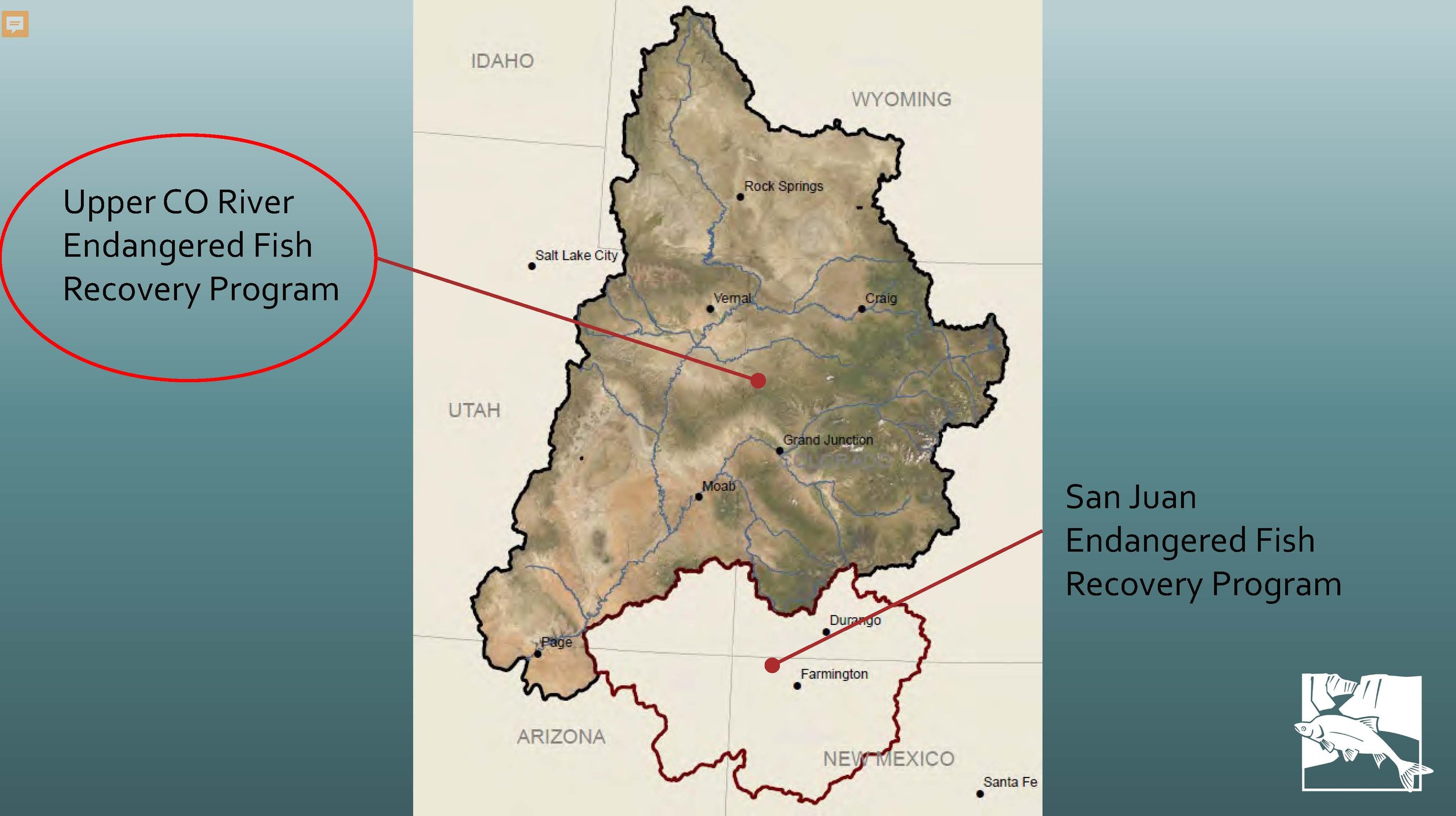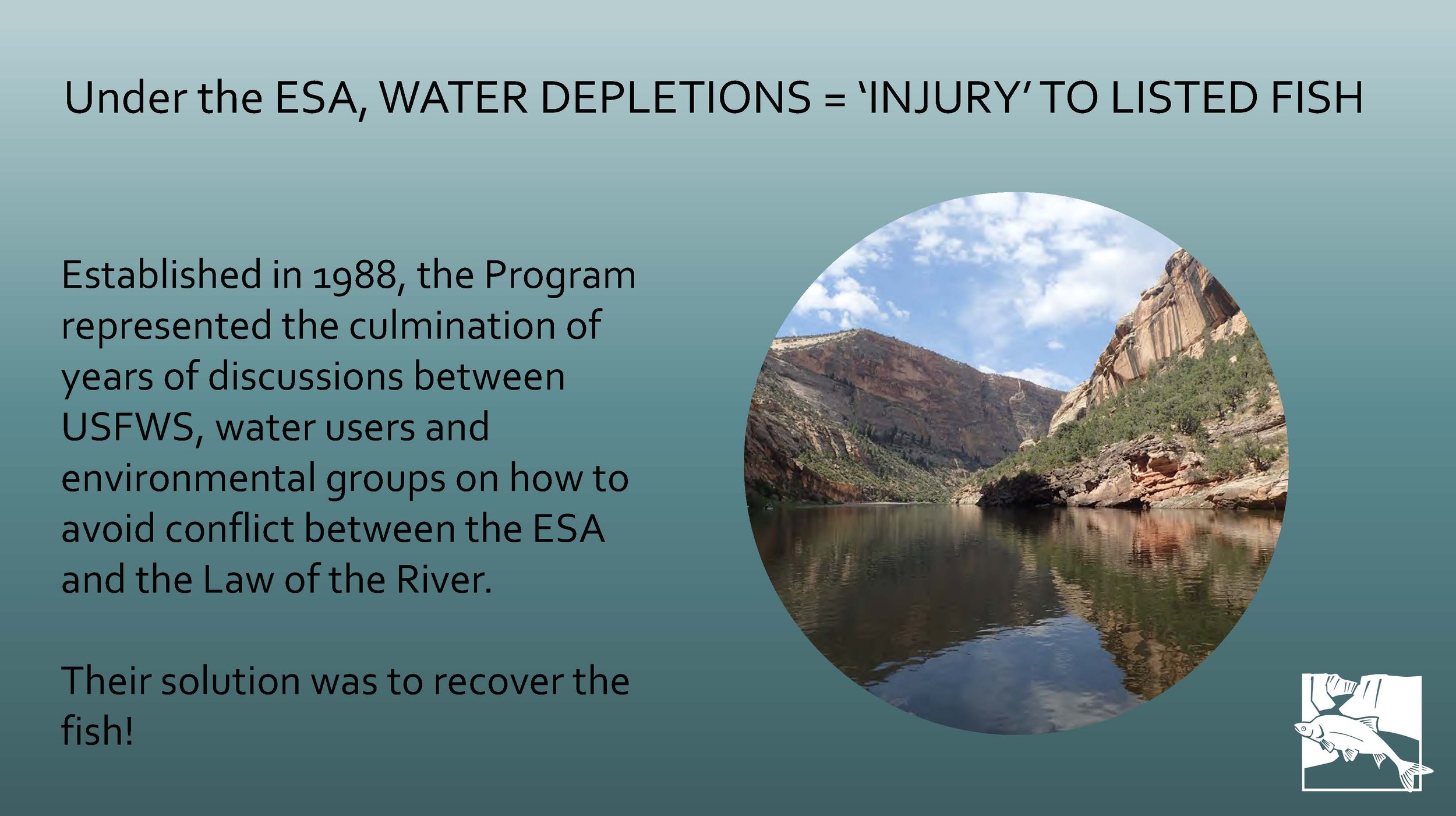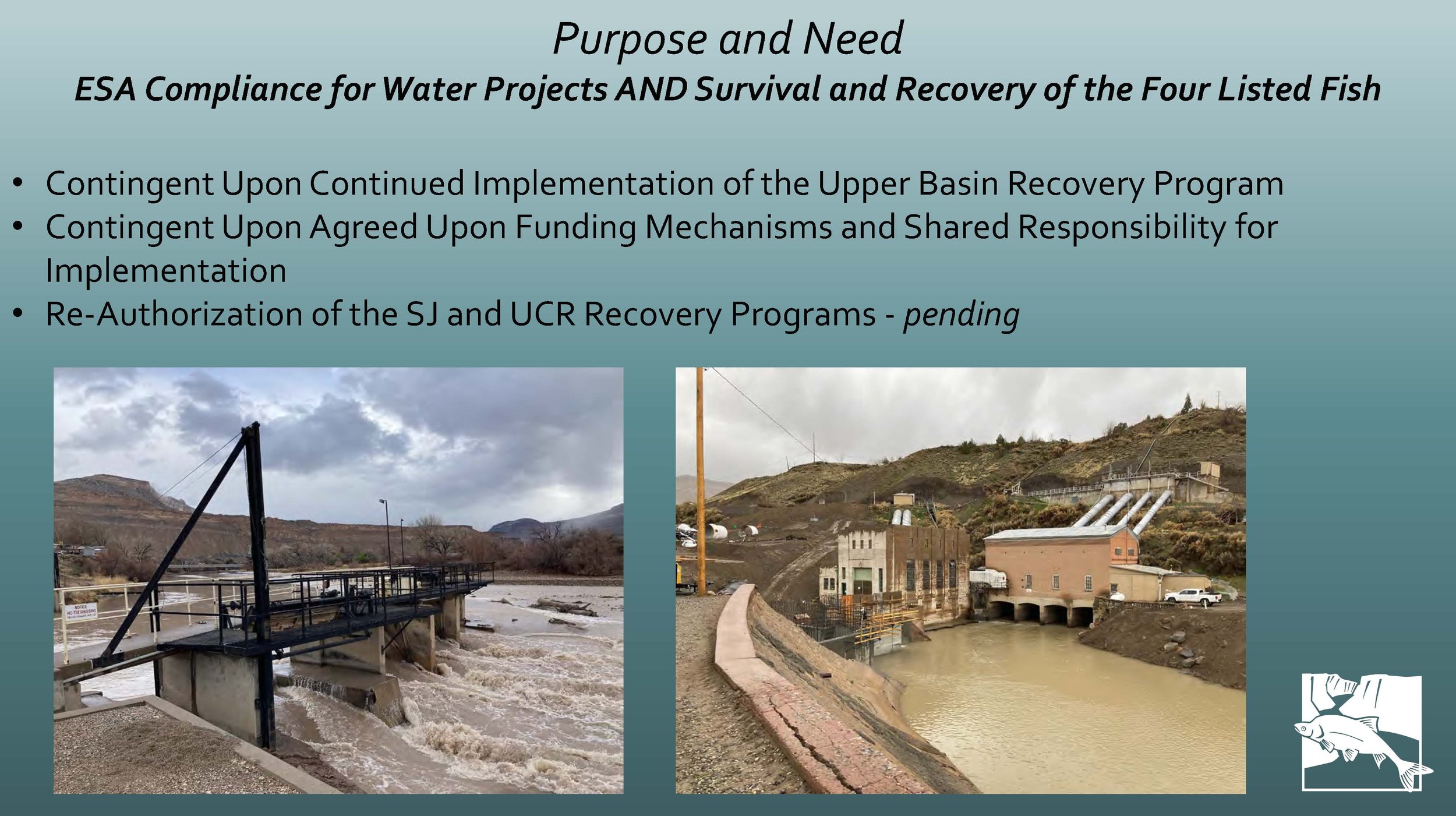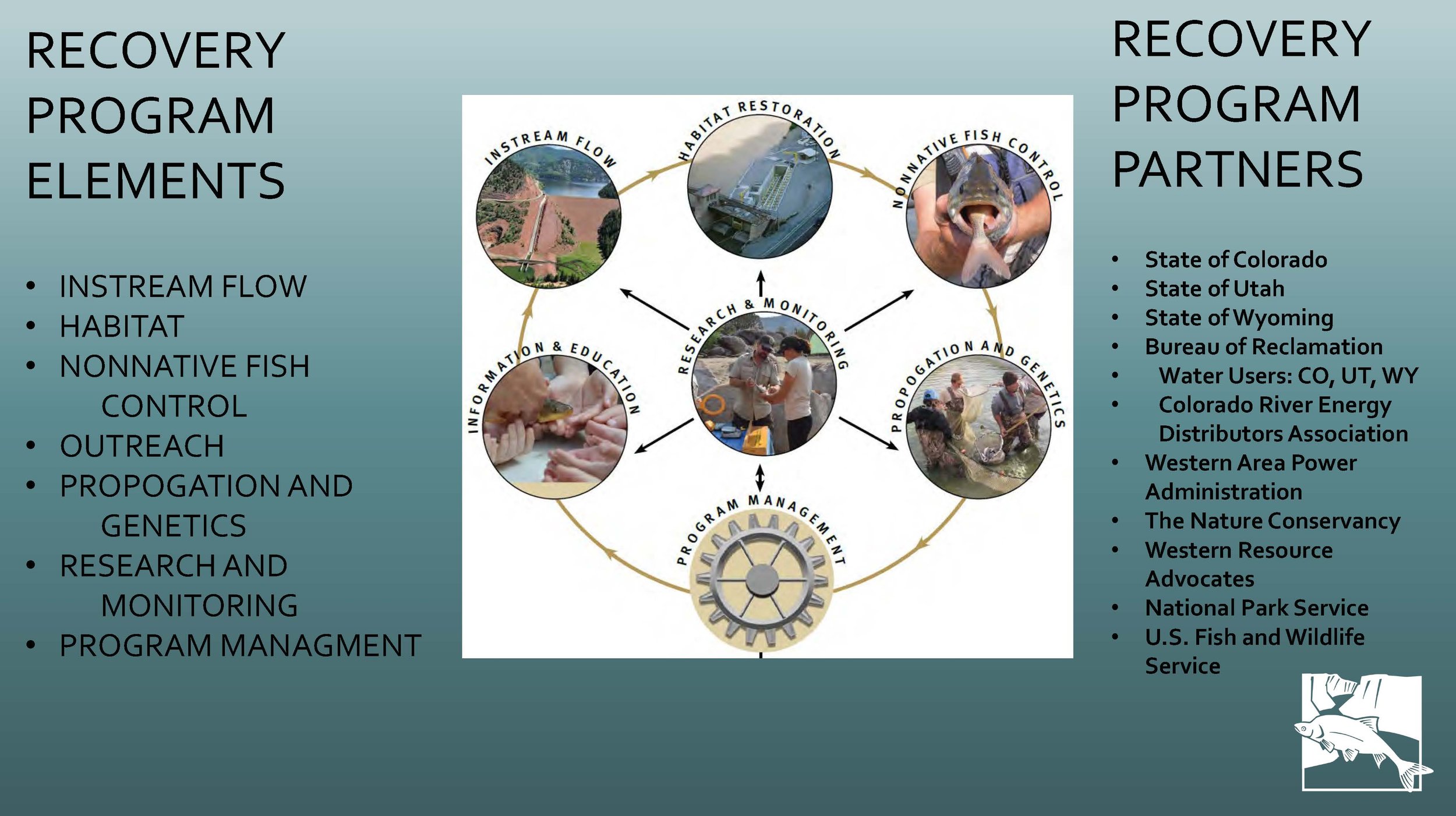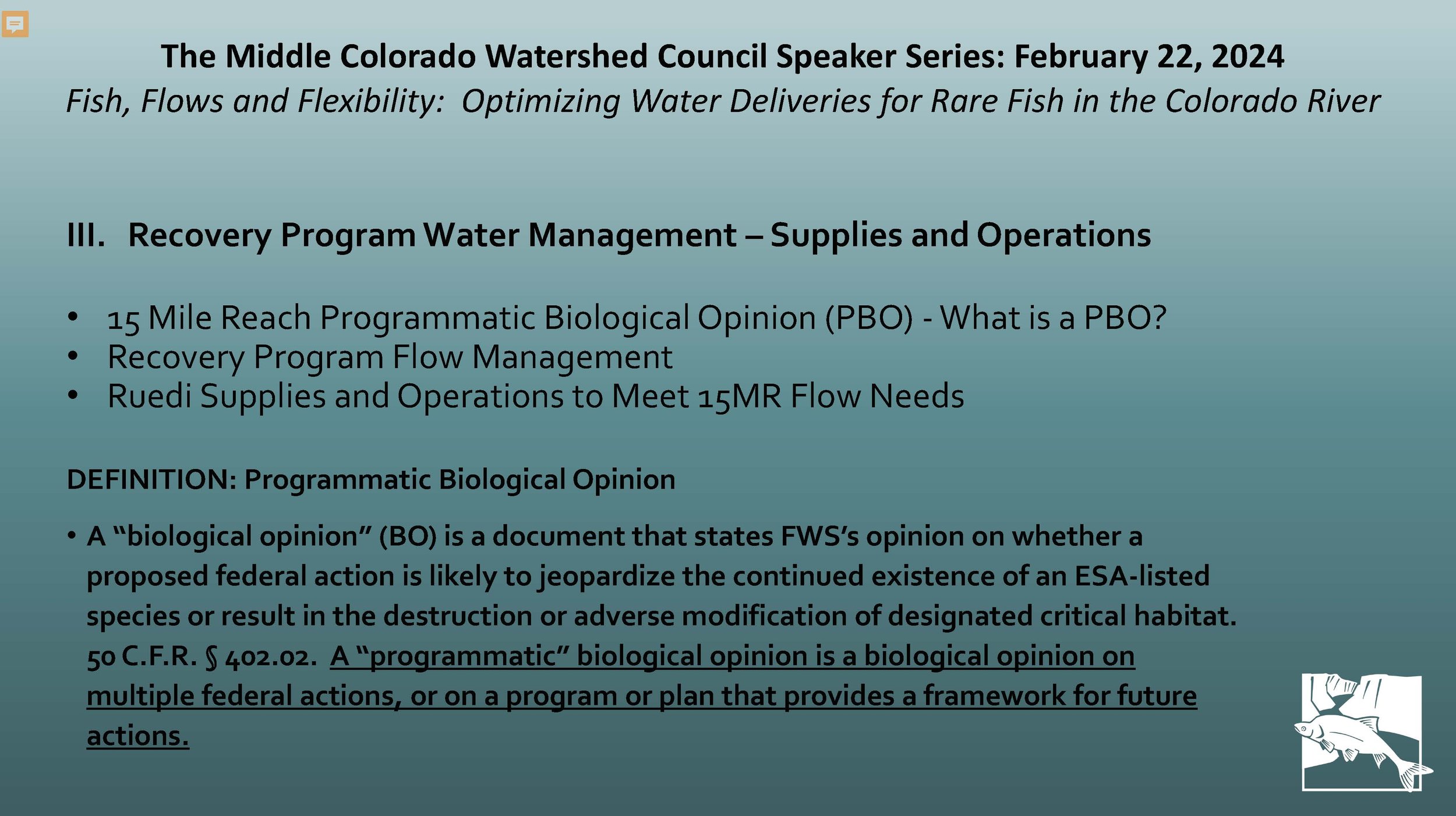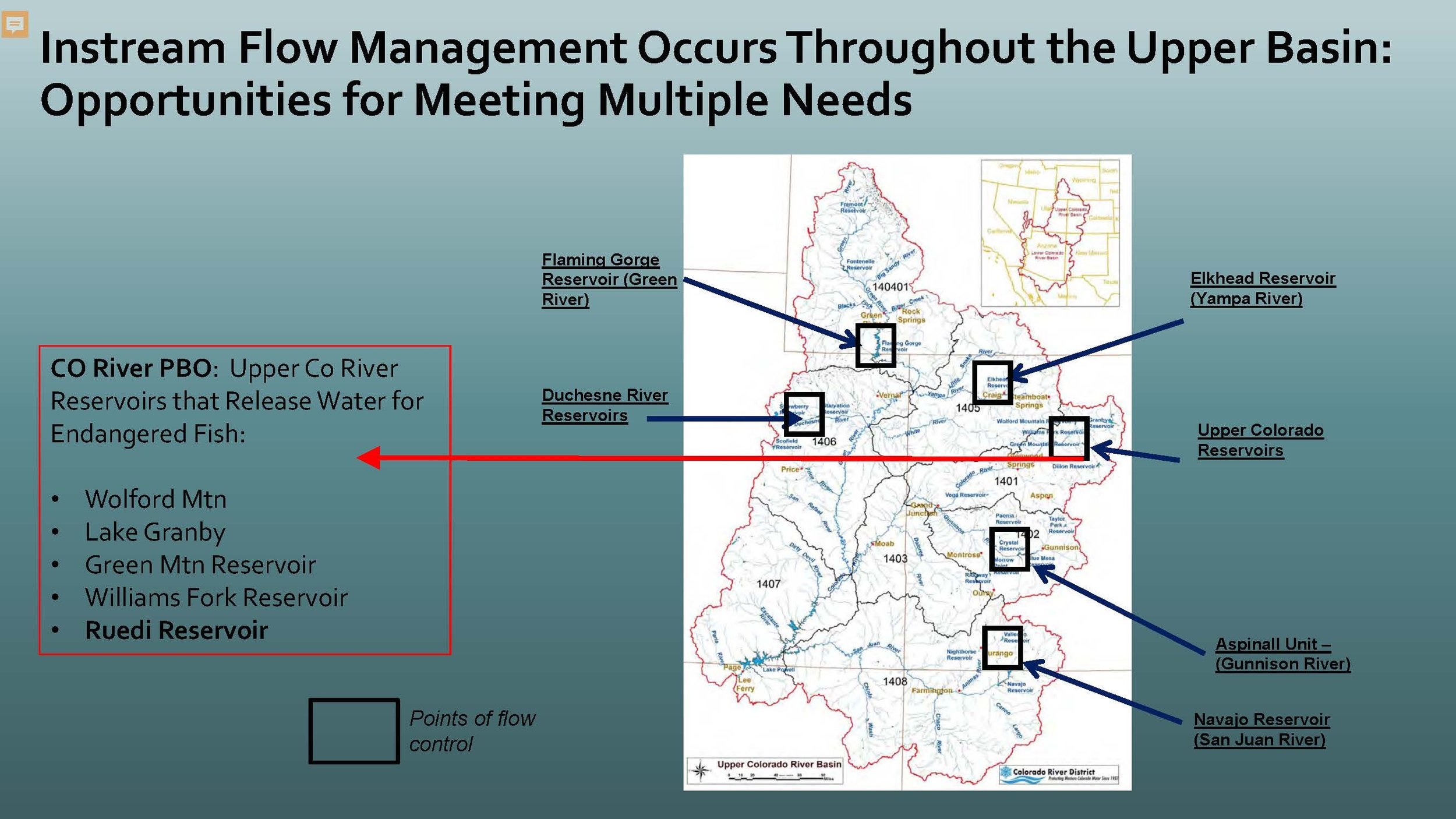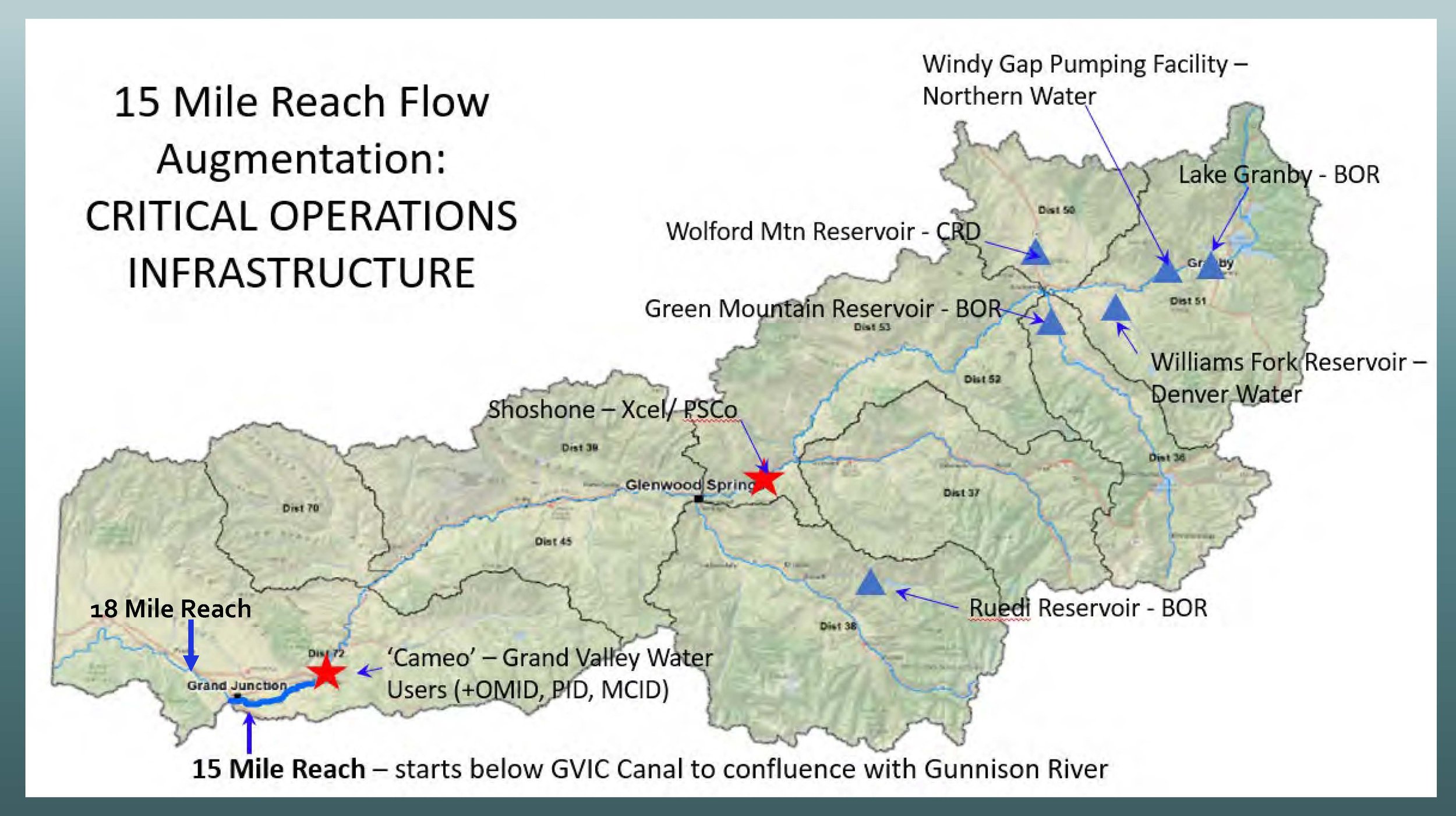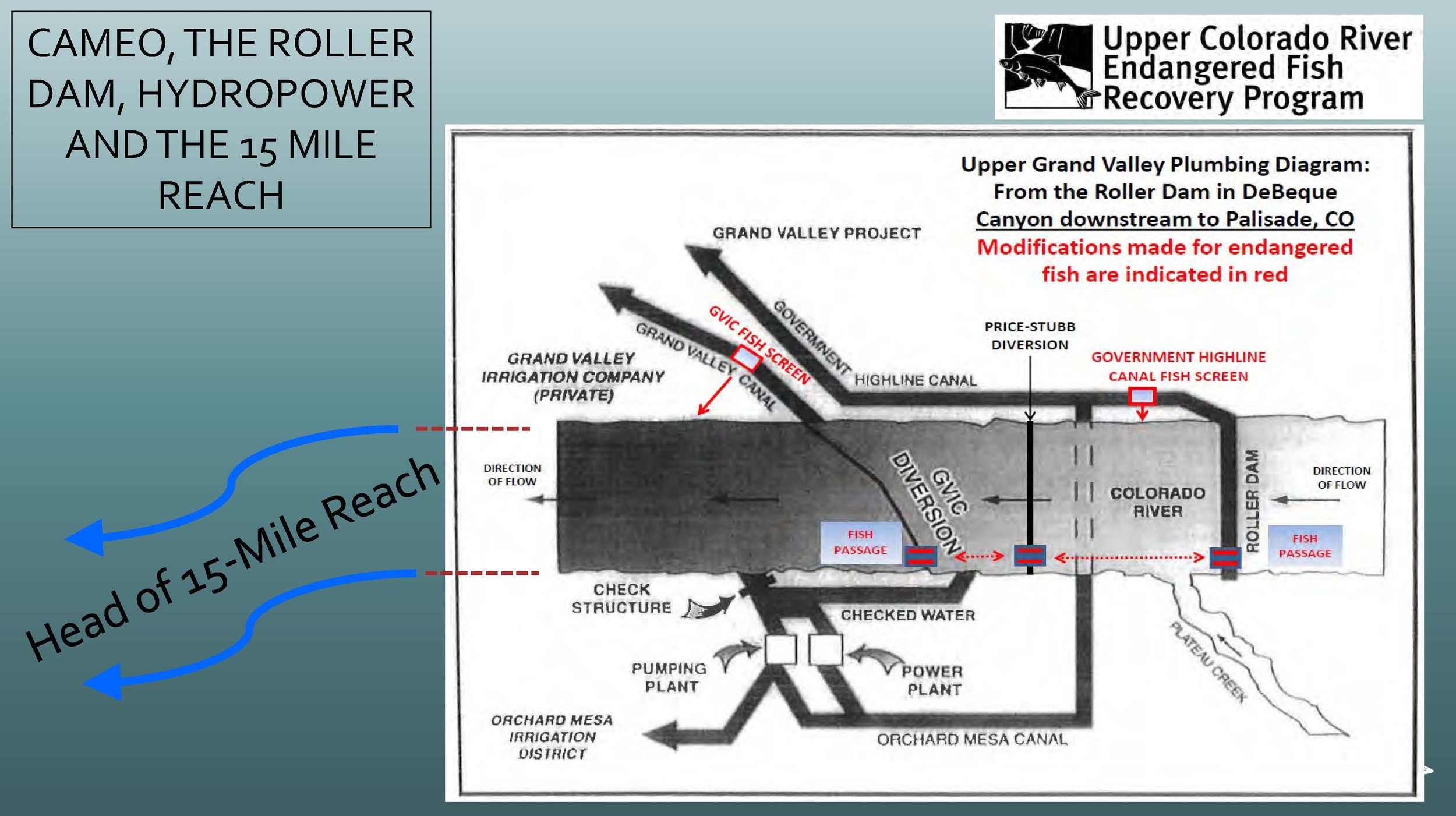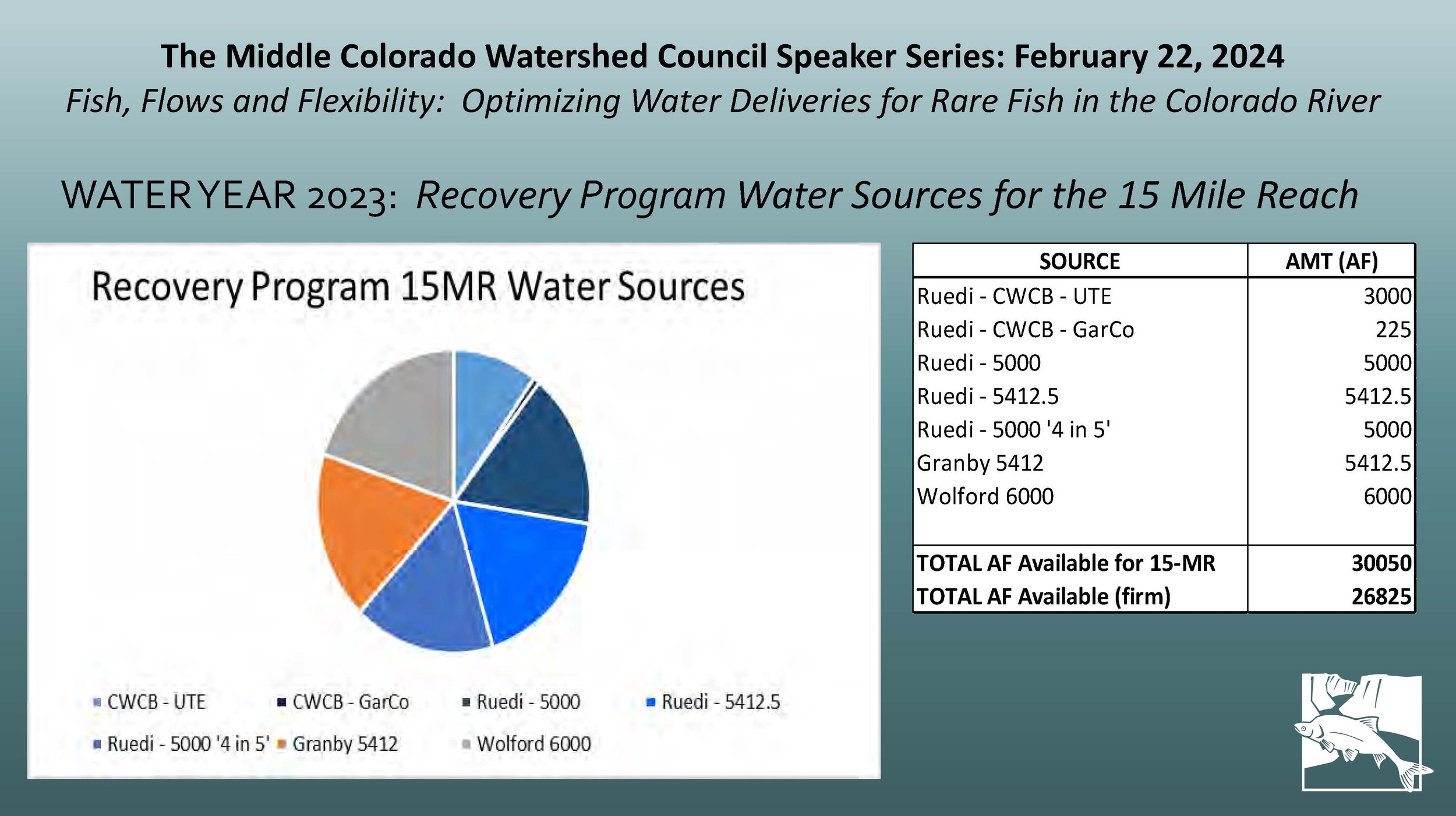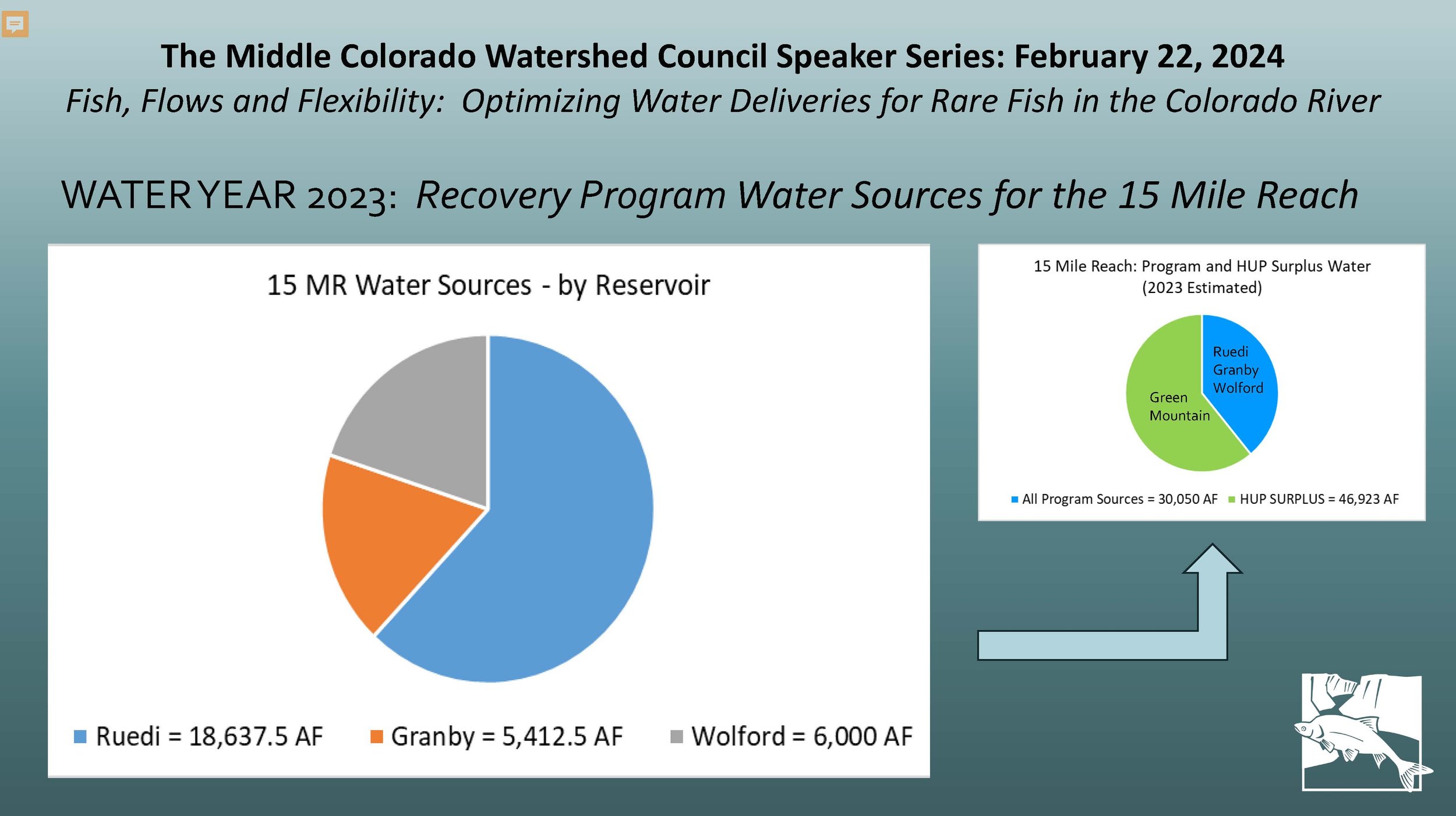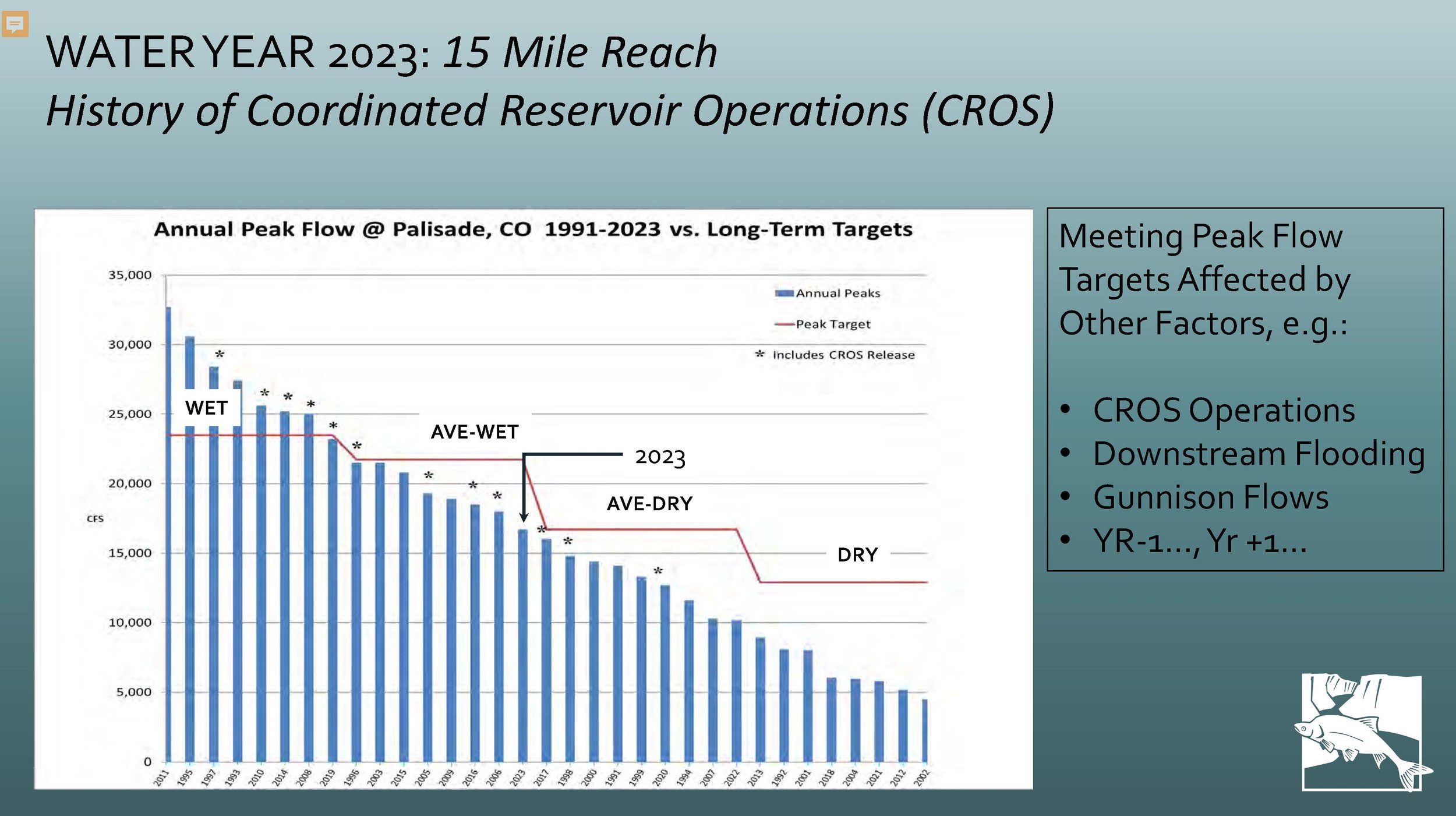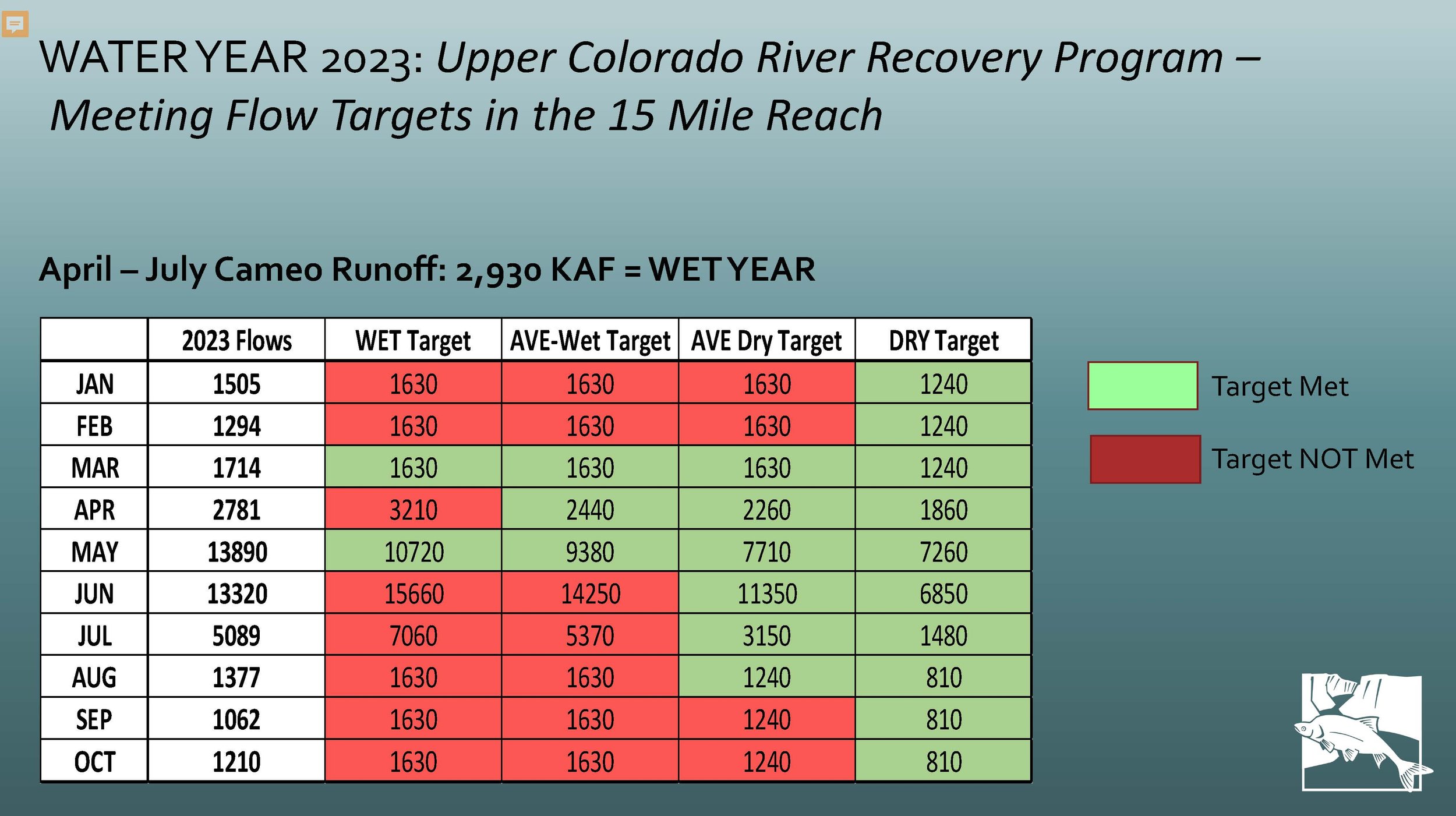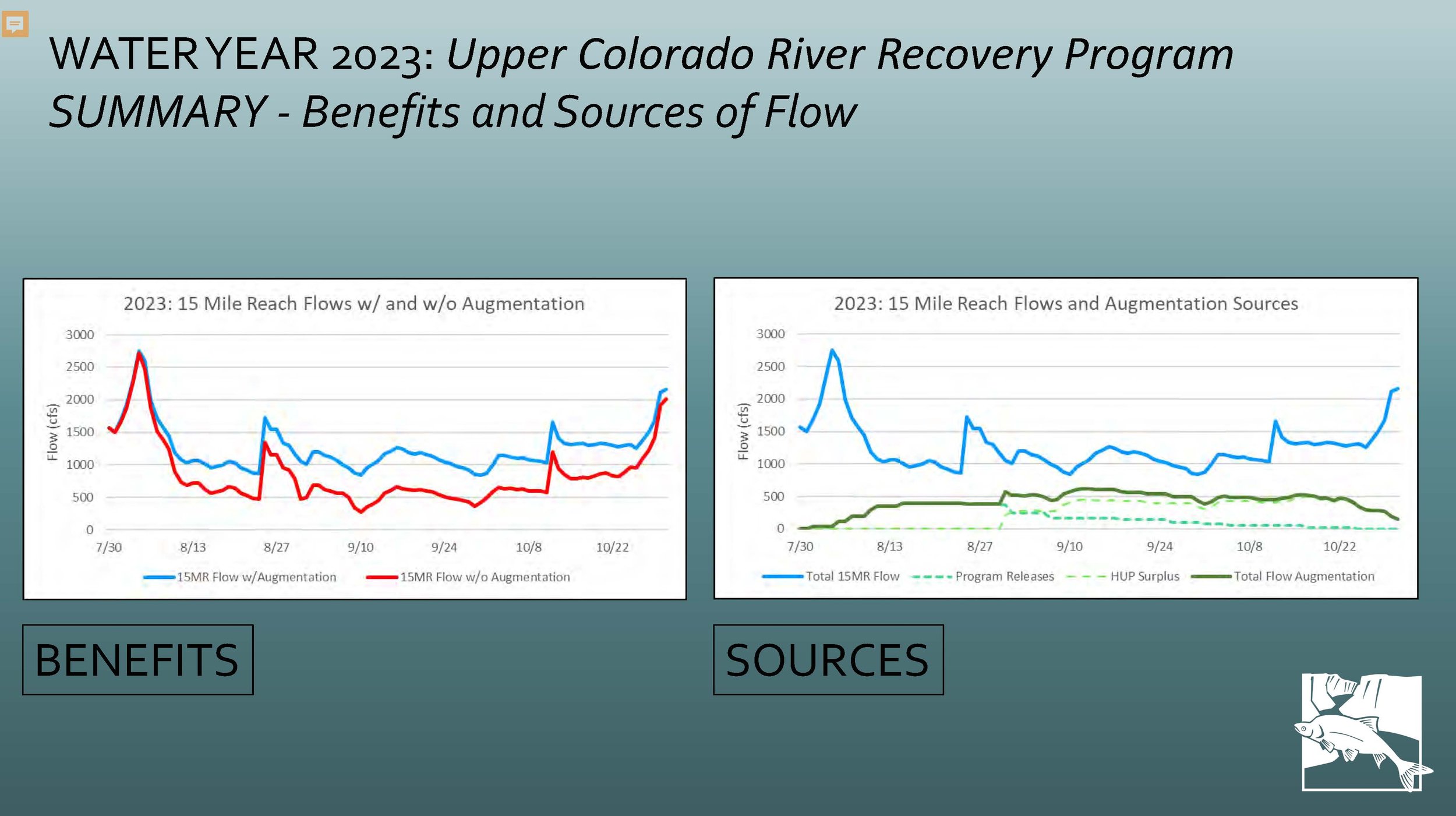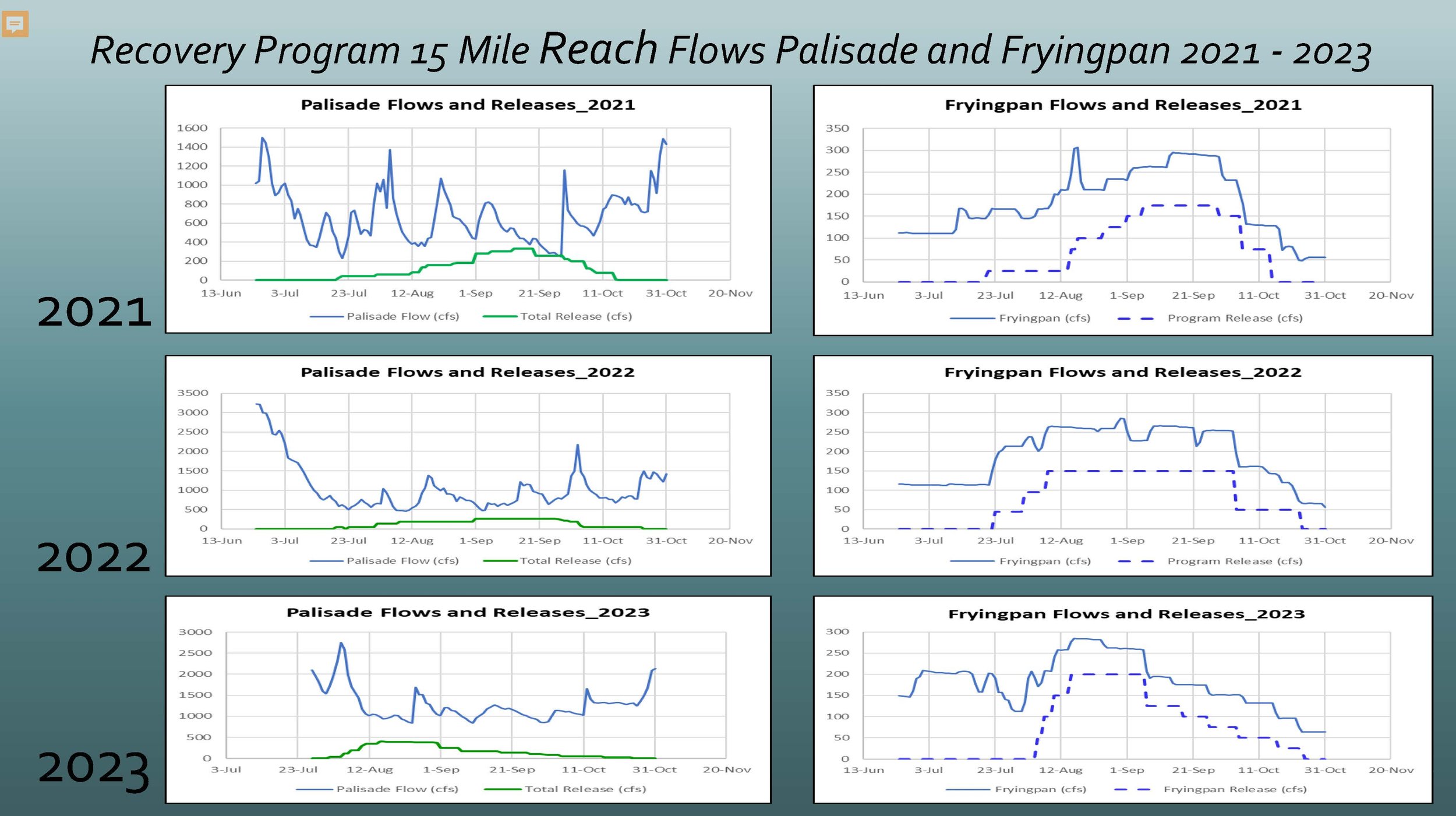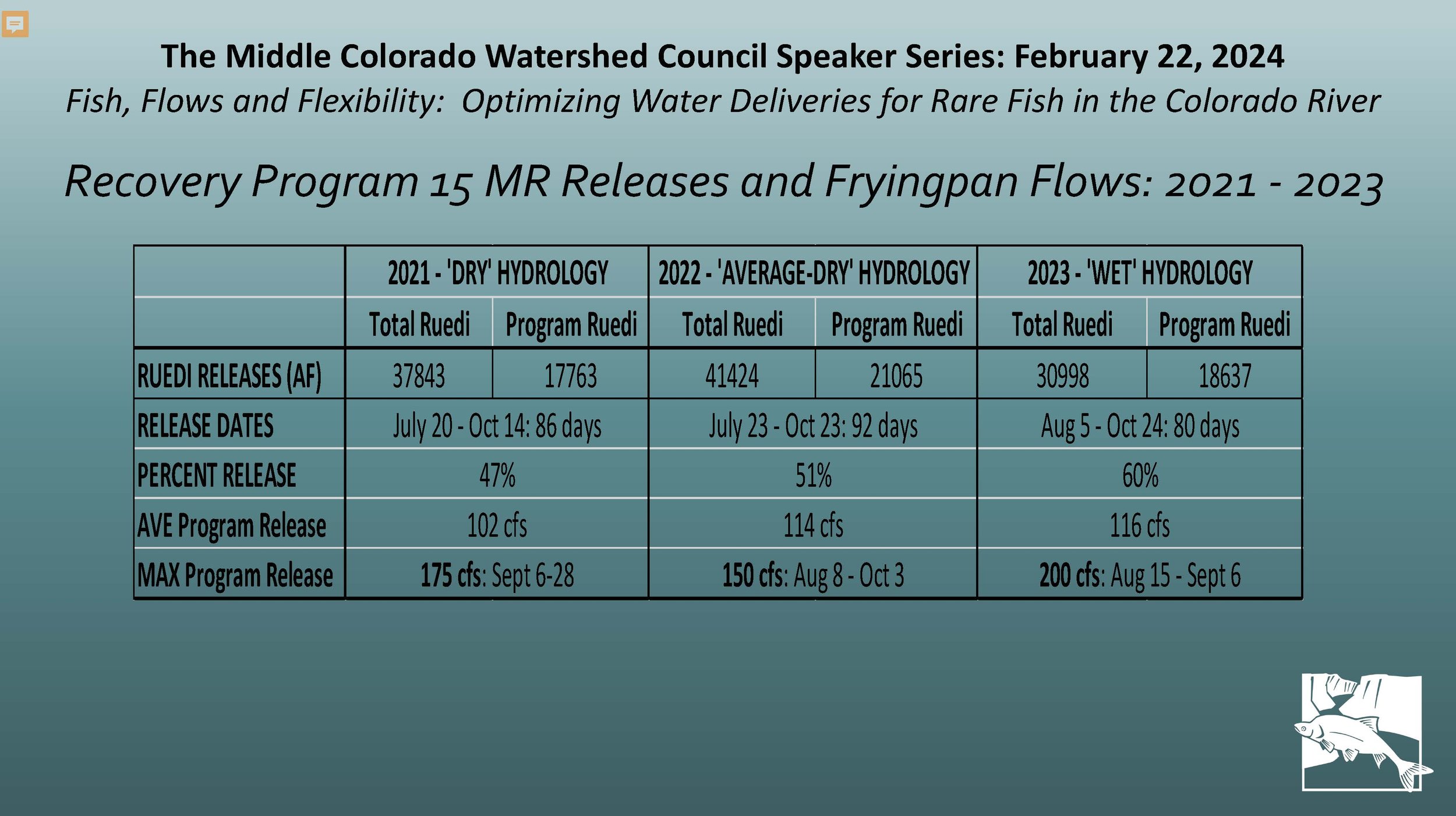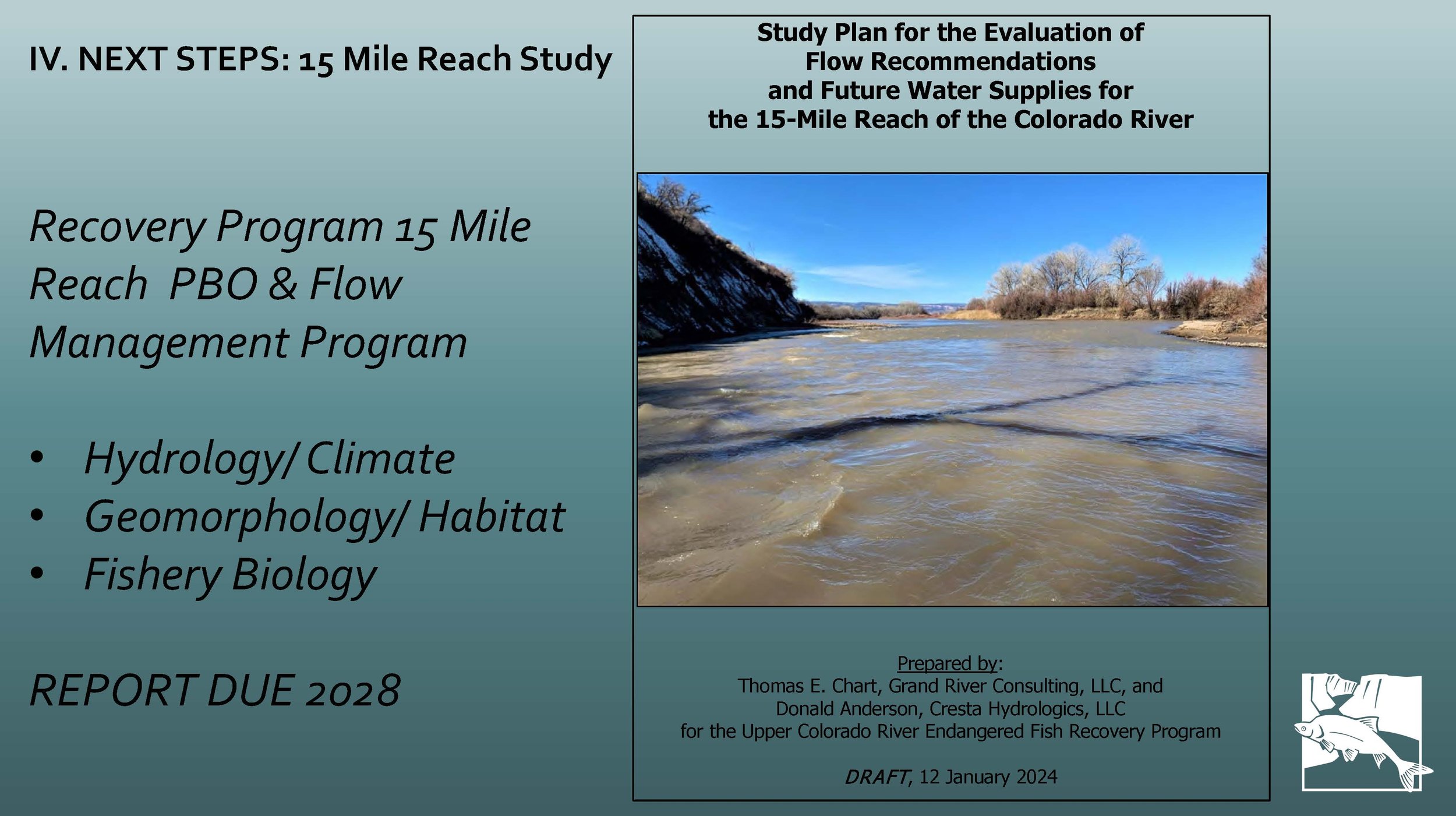Upper Colorado River Endangered Fish Recovery Program ensures human use while protecting fish
Native fish in the Colorado River evolved over hundreds of millions of years. They have developed biological features and life histories adapted to the river’s unique hydrology and environmental conditions. Changes in hydrology, water uses, introduced game fish and habitat alterations have deteriorated conditions for many native fish. Four imperiled fish species received threatened and endangered status under the Endangered Species Act (ESA).
In 1967, the US Fish and Wildlife Service came up with a list of endangered species as the foundation for the need for an Endangered Species Act. It didn't have any legal force until the passage of ESA in 1973, at which point that list became the species that were automatically and originally listed under the Act. All other species had to go through the Federal Register to become listed.
The Colorado pikeminnow, pre-listed in 1967 and listed in 1973, is the largest minnow native to North America and is the the top native predator in the Colorado River basin. The razorback sucker, listed endangered in 1991 and proposed for down listing to threatened in2021, is a unique species that receives its name from a sharp-edged keel on top of the fish’s back that is used for stabilization in fast moving waters. The razorback can grow up to 3 feet in length and live for 40 years.
Video shows the razorback sucker’s impressive migration routes. Video courtesy Utah Division of Wildlife and US Fish and Wildlife.
Humpback chub, pre-listed in 1967, were listed as endangered in 1973 in response to habitat fragmentation and altered flow regimes in the Colorado River. They were downlisted to threatened in 2022. The bonytail, listed in 1980, is the rarest of the four listed species and was listed as an endangered species in 1980. A bonytail can have longevity of up to 50 years.
The US Fish and Wildlife Upper Colorado River Endangered Fish Recovery Program was created to facilitate recovery of these species while allowing existing water uses and some additional water development to continue. Partners from federal and state agencies, tribal organizations, water users, hydropower interests, and conservation groups collaborate for recovery of these increasingly rare native fishes.
The Endangered Fish Program keeps water in the the 15-Mile Reach of the Colorado River that starts east of Grand Junction below the last of the large Grand Valley water diversion structures and ends at the confluence with the Gunnison River. This river stretch contains critical habitat for the listed species. Multiple program partners came together to collaborate on a plan for using strategic reservoir releases to ensure water continuously flows year-round through this reach.
Without releases from these reservoirs, the 15-Mile Reach would likely be dry in years of severe drought. Thanks to Colorado’s water rights system, ensuring water to this critical reach also ensures upstream water continues to flow through the Middle Colorado Watershed and further augments baseflows below the Gunnison confluence to Lake Powell.
The renewal of the Upper Colorado River Recovery Program was identified as one of the 55 goals of the Middle Colorado Watershed Council’s Integrated Stream Management Plan (IWMP). The Recovery Program’s federal funding comes to an end in 2024, and program managers and program beneficiaries need to convince Congress of the importance of continued recovery efforts and federal support. If the Recovery Program was not reauthorized, the ESA requirements remain and could result in waters users being directly responsible for ESA compliance.
David Graf, Instream Flow Coordinator for US Fish and Wildlife, presented to a Middle Colorado Watershed Council audience in February 2024. Above is part of the slide show he presented describing the Upper Colorado Endangered Fish Recovery Program and information about keeping water in the 15-Mile Reach. See slide show from presentation below.


